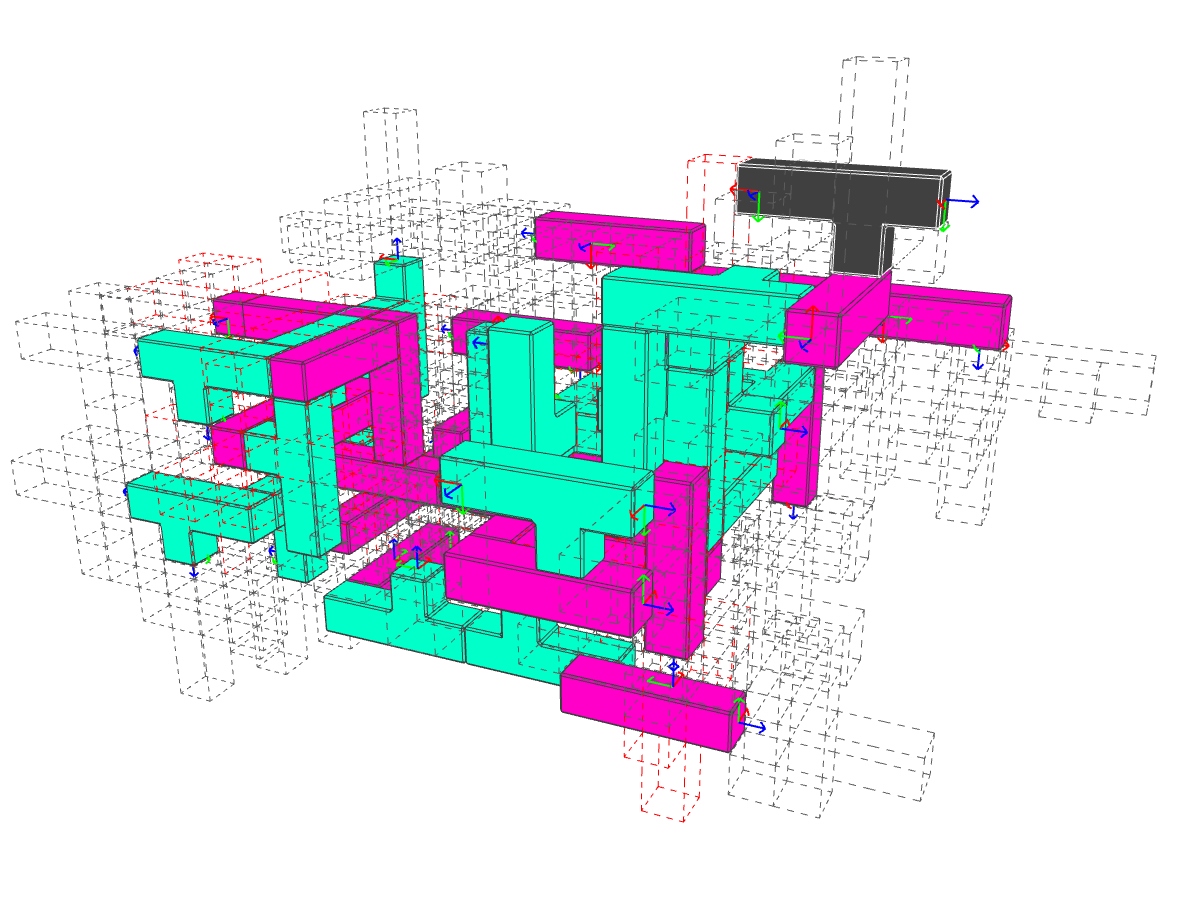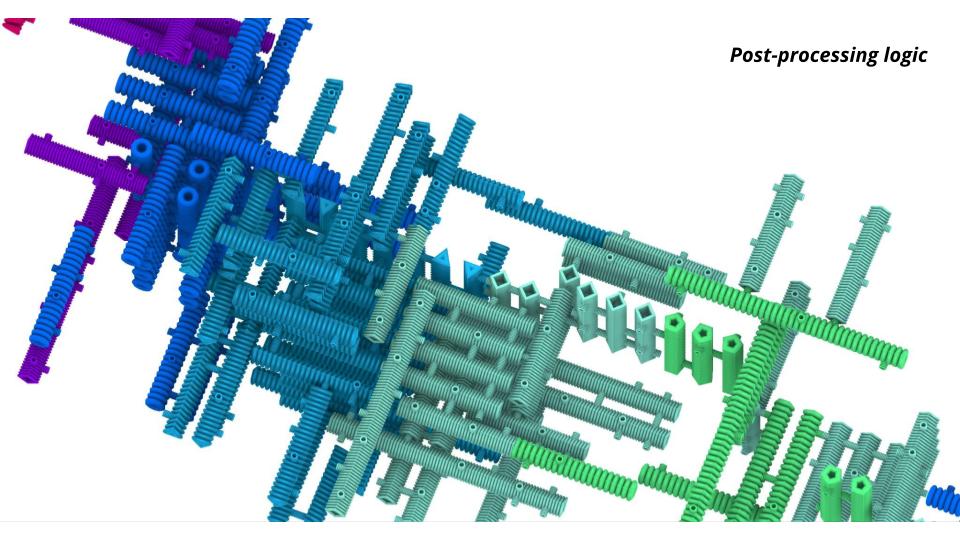
Photo credit: Andrea Graziano
The seminar will focus on the computational thinking and logic to design assembly/growth processes, investigated through iterative algorithmic strategies starting from elementary spatial building blocks. The designed building blocks will be treated as basic units of computation, able to store and compute data due to their topological and spatio-geometric qualities. Assemblages are thus seen as coherent organizations able to store and process information. Starting from an initial element and position, the growth process will be driven by internal and external conditions which limit and enhance the growth structure and system qualities. The final aggregation is then investigated through the constructability and robotic automation assembly lenses filtering some key information and data that can be used for further robotic explorations.
The seminar will explore the dual geometric/topological computing nature of spatial systems, using basic iterative logics explored through Grasshopper and the Anemone plug-in.
Learning Objectives
At course completion the student will:
- understand the concept of computation and the difference between computational and computerised in the design process;
- learn and reinforce computational thinking logic;
- understand the basics of non-linear and iterative processes and learn how to use iterative tools and to manage data structure complexity;
- learn how to create algorithmic strategies to approach assemblages, and not only, design explorations;
- be able to encode/decode data into/from geometry and exploit its spatial-topological structure to support design strategies.
- be able to encode information & constraints for further numerically controlled tools for fabrication
Keywords
#computation #computationalthinking #assemblages #iterativeprocesses #design #iformation #data #logic










